Board of Trustees Professor
Gerald Gabrielse, one of the world's leading practitioners of fundamental, low energy
physics and an active member of the National Academy of
Sciences, is relocating from Harvard to Northwestern to be the founding director of
the Center for Fundamental Physics at Low Energy (CFP for short). An award-winning researcher and teacher, Gabrielse has chaired both the Harvard Physics Department and the Division of Atomic, Molecular and Optical
Physics (DAMOP) of the American Physical Society, and he leads the international ATRAP Collaboration at CERN.
The Gabrielse
research group tested the most precise prediction of the
Standard Model of Particle Physics using the most precisely
measured property of an elementary particle, made the most precise determination of the fine structure constant, tested
the Standard Model's most fundamental symmetry to an exquisite
precision, made one of the most stringent tests of
Supersymmetry and other proposed improvements to the Standard Model, and started low energy antiproton and antihydrogen physics.
The design and construction of new laboratories and offices for the
research group and the CFP are now underway. The new
facilities should be ready for occupation by the end of
the summer of 2017. Until the labs and offices are
completed, the Gabrielse group webpage and a list of publications are being maintained at Harvard.
Recent Advances
| Lepton Magnetic Moments - one apparatus, many results (below) |
Supported by NSF AMO |
 Most accurate measurements of g/2 and a Most accurate measurements of g/2 and a |
|
|
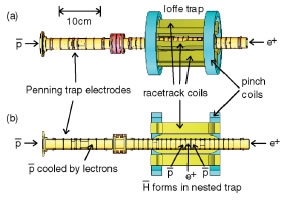 Penning-Ioffe trap for antihydrogen Penning-Ioffe trap for antihydrogen |
|
|
| Proton and Antiproton Magnetic Moments |
Supported by NSF and AFOSR |
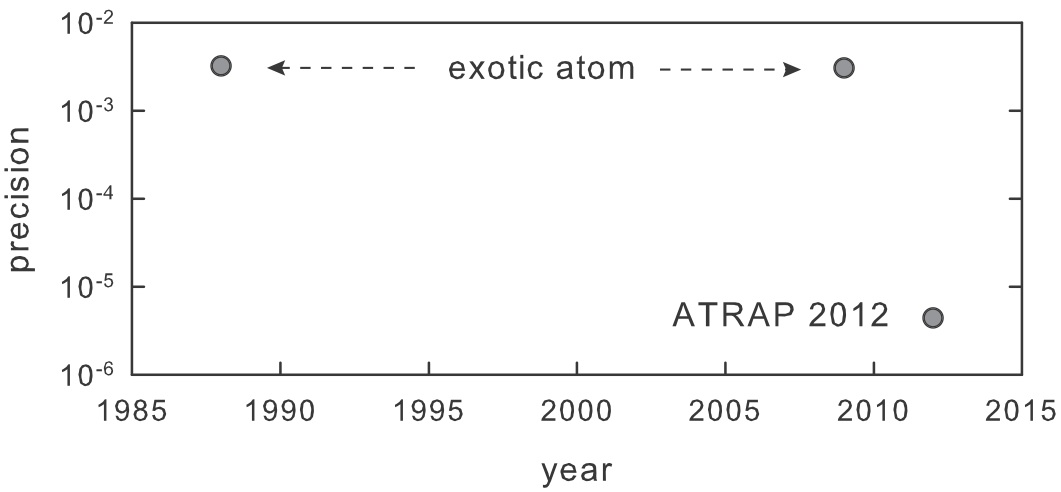 Our new measurement is 680 times more precise than all previous measurements Our new measurement is 680 times more precise than all previous measurements |
|
|
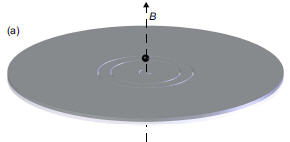 Planar Penning trap Planar Penning trap |
- Goal 1: To identify planar the first trap designs within which an electron qubit could be realized (Recent PRA)
- Goal 2: To observe one electron suspended within a planar trap chip
- Goal 3: To demonstrate a one-electron qubit for the first time
- Goal 4: To couple one-electron qubits
- Goal 5: To investigate a coupled array of one-electron qubits
PRA: consideration of two entangled electrons |
|
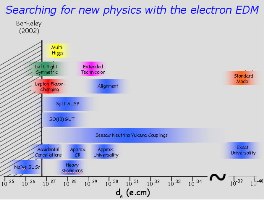 |
- Use ThO molecule
- Goal is a significantly improved electron EDM measurement or limit on a 5 year time scale
PRA: overview and initial progress
|
|
Sample of Completed Projects (Overview)
| Why Does Sideband Mass Spectroscopy Work? |
Supported by NSF, AFOSR, and the Humboldt Foundation |
| What "deeper magic" makes the sideband frequency, ?+ + ?-, be a good approximation to the cyclotron frequency? |
|
|
 Improving antiproton q/m by factor of almost a million Improving antiproton q/m by factor of almost a million |
- Most stringent test of CPT invariance with a baryon system
- Nearly a million times more precise than previous CPT tests with baryons
- Series of three measurements with increasing accuracy
|
|
 First antiproton trap First antiproton trap |
- Developed by the Gabrielse group and TRAP collaborators
- Used to get cold antiprotons for Q/M measurements
- Used by and makes possible all cold antihydrogen experiments
|
|
| Brown-Gabrielse Invariance Theorem |
Makes possible many of the most precise measurements in particle, atomic, and nuclear physics |
 |
- Makes possible the most accurate measurements of magnetic moments
- Makes possible the most accurate ion mass spectroscopy
- Makes possible the most accurate nuclear mass spectrometry
|
|
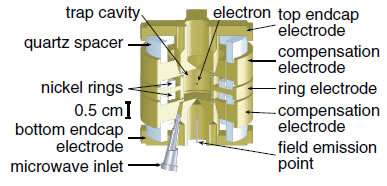 Cylindrical Penning trap Cylindrical Penning trap |
|
|
| Superconducting Solenoid that Shields Magnetic Field Fluctuations |
Was supported by NSF AMO, AFOSR, and NIST |
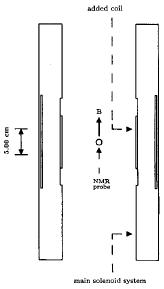 |
- Cancels by a factor of 250 or more any change in the external magnet field
- A flux change in the solenoid produces a current, that produces a field, that cancels the field change at the center of the system
- No active electronics
- Made it possible to do antiproton Q/M measurements not far from cycling LEAR and PS magnets
- Allows MRI imaging machines to be located nearer to elevators, etc.
- Used for stable ICR mass spectrometry (e.g. to analyze pharmaceuticals)
|
|
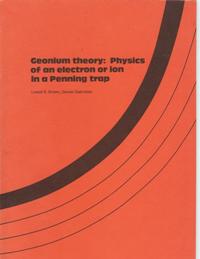 |
- The often-cited basic review of the properties of a charged particle in a Penning trap
(click on cover image to download)
|
Immediate Opportunities
For new graduate students
Prospective graduate students interested in joining the Gabrielse group should apply for
admission to the Northwestern Department of Physics and Astronomy before Dec. 31, 2018. Applications should clearly indicate interest in joining the Gabrielse group.
Applicants should email their interest to
Prof. Gabrielse and
his administrative assistant.
For CFP fellows
CFP
fellows will make the CFP an exciting, productive and visible center of excellence. Applicants for postdoc
fellowship positions who are interested in working in the Gabrielse research group
should email and
his administrative assistant.
Positions are available immediately.
(Starting in 2018 an annual competition for CFP fellowships
is anticipated.) Professor Gabrielse has collaborated
with and supervised the PhD studies of
nearly 50 Harvard
students, and has also collaborated with and employed many
Harvard
postdocs.
Group alums now have positions in universities,
government labs, teaching colleges and in industry.










